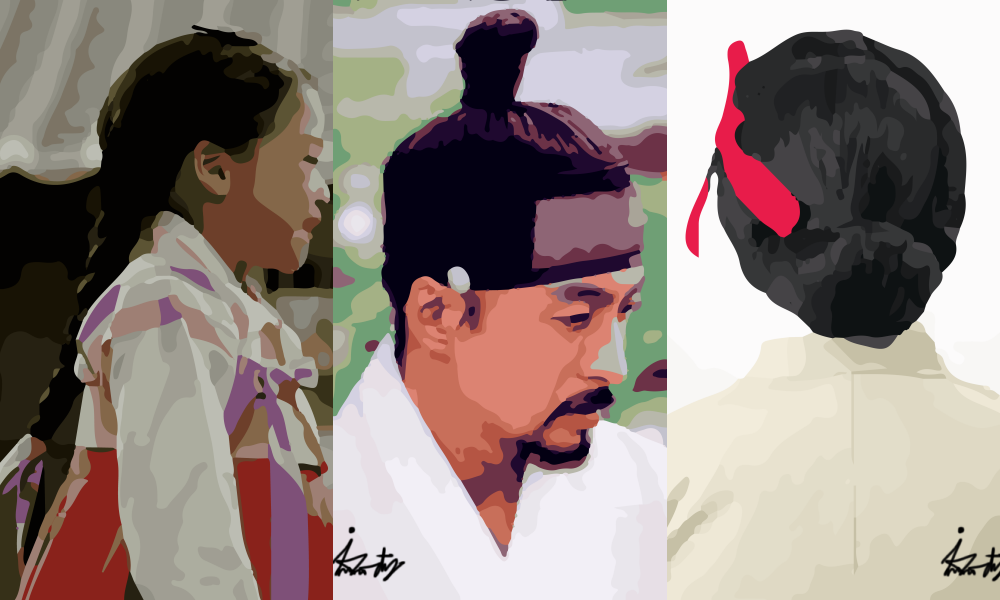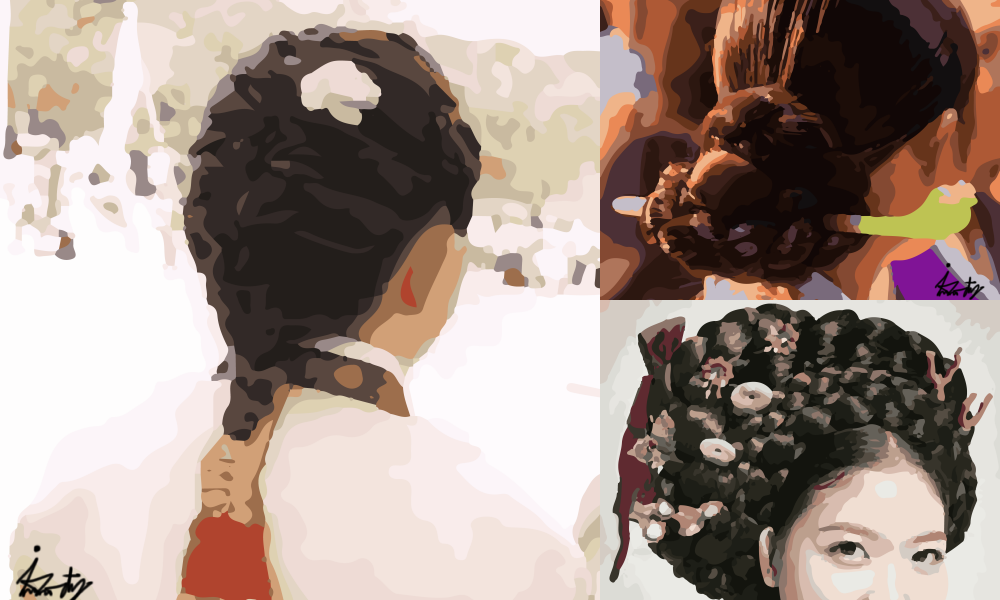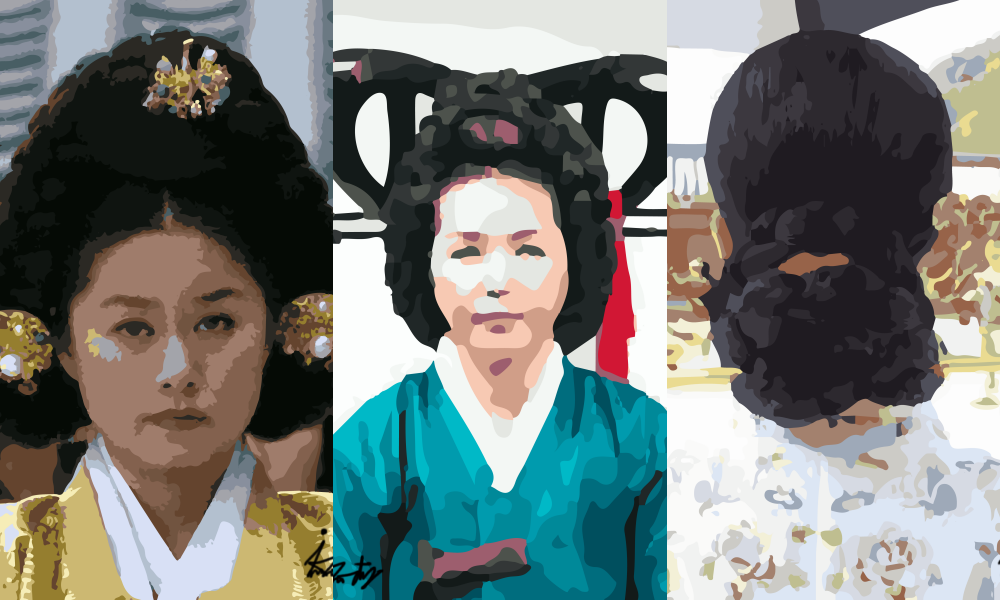- 한국어
- English
- 日本語
- 中文
- العربية
- Español
- Français
- Deutsch
- Pусский
- Tiếng Việt
- Indonesian
By Honorary Reporter Iran Tavera from Mexico
Photo = Iran Tavera
Hairstyles during the Joseon Dynasty (1392-1910) were amazing, elaborate and decorated down to the smallest detail. Many historical K-dramas have featured the diversity of hairstyles used during that era.
The word meori in Korean means "head," which is why this word is related to the names of the hairstyles during the Joseon era.
Here are the leading hairstyles of this period.

Badukpan meori (left), sangtu (center) and ko meori (Iran Tavera)
Badukpan meori
Meant for girls ages 3-4, this hairstyle had the hair placed on each side by small braids and then combined with a main braid at the back of the head.
Sangtu
This hairstyle used by men was especially popular among scholars and nobles. The hair was gathered in a high bun (top knot) with the headband manggeon, which kept the hair tied and a helmets or hat in place. The top knot was a symbol of virility for men since they began using it after they got married.
Ko meori
Used by lower-class married women, this style had the hair braided in two ponytails and pulled at the top.

Daenggi meori (left), jjokjin meori (top right) and eonjeun meori (bottom right)
Daenggi meori and kwimit meori
These hairstyles were popular among young singles. The hair was parted forward and braided toward the back, and was tied at the end of the braid with a daenggi,a long red braid loop. The baesssi daenggi was used on women's hair and the hogeon on men's. This hairstyle was related to neo-Confucianism since it was considered improper to cut one's hair because it was a part of one's body given to someone by his or her parents.
Jjokjin meori
One of the dynasty's most popular hairstyles, this was used by married women in being influenced by daenggi meori, as the braid was kept and tied as a bow at the back of the neck. The accessory used was the long hairpin binyeo.
Eonjeun meori
This was also a highly popular hairstyle among married women. Though similar to jjokjin meori, this style rested on the top side of the head instead of having the bow at the back of the neck. This hairstyle was heavy and expensive and thus banned in the mid-Joseon era as it was considered to promote waste among nobles.

From left are eoyeon meori, keun meori and cheopjin meori.
Eoyeon meori
This hairstyle was exclusively for the women of the palace, made only with wigs, and used by the queen, consorts and the queen mother. The hair arrangement with accessories called tteoljam gave a more luxurious appearance to the hairstyle.
Keun meori
Considered the most traditional hairstyle of its time, this type featured the ornament tteoguji, which served as support for the hair, and was used by the queen, royal concubines, court ladies and royal consorts on special occasions such as a ceremony.
Cheopjin meori
This hairstyle was worn by noble women of the palace like high-ranking court ladies and the wives of government officials. The hair was tied in a bun at the back and the addition of bobby pins like bongjam, chopji and yongjam depended on the social rank of the wearer.
enny0611@korea.kr
*This article is written by a Korea.net Honorary Reporter. Our group of Honorary Reporters are from all around the world, and they share with Korea.net their love and passion for all things Korean.